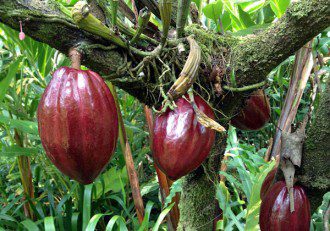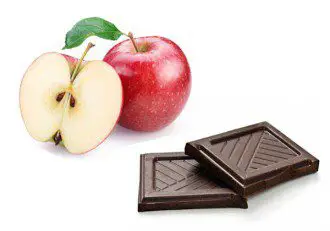5th May 2016
Guest Writer for Wake Up World
Of all the treats available, chocolate is one of the most popular foods in the world. The first solid chocolate bar, made from cocoa butter, cocoa powder and sugar, was introduced by the British chocolate company J.S. Fry & Sons in 1847, but the history of chocolate goes back at least 4,000 years.1
Pre-Olmec cultures in Mexico produced chocolate as early as 1900 B.C. Originally, it was consumed as a bitter beverage. The cacao beans were fermented, roasted, and then ground into a paste that was mixed with water and spices like chili peppers and vanilla, sweetened with honey. Throughout its history, chocolate — “the food of the Gods” — has remained a symbol of luxury, wealth, and power. During the 14th century, the Aztecs and Mayans even used cacao beans as currency.
Research has also revealed chocolate has some rather impressive health benefits, provided you’re willing to give up the now-familiar sweetness of modern day milk chocolate.
The Olmecs, Mayans, and Aztecs valued cacao for its mood enhancing and aphrodisiac properties, and it was typically reserved for the ruling class. In the 17th century, cocoa and chocolate were considered potential medicine, and historical documents in Europe reveal they were used to treat angina and heart pain.2
Not All Chocolate Is Created Equal
Raw cacao is actually quite bitter, not sweet, due to the nearly 400 polyphenols that are present. When we’re referring to the health benefits of chocolate, this is the chocolate we’re referring to. Americans consume an estimated 12 pounds of chocolate per capita each year.3
Unfortunately, the vast majority of that is in the form of milk chocolate candy, which contains very minute amounts of healthy cacao, and loads of sugar. The milk added to milk chocolate can also interfere with your body’s ability to absorb the beneficial antioxidants (polyphenols) in the chocolate.
Chocolate Terminology
To get off on the right foot, it may be helpful to understand the distinction between cacao, cocoa, and chocolate:4
- Cacao: Refers to the plant, a small evergreen tree of the species Theobroma cacao, and its dried seeds, also known as cacao beans or cocoa beans, prior to processing.

 If you’re after health benefits, raw cacao nibs are what you’re looking for. Ideally, buy them whole and grind them yourself (a coffee grinder can be used for this) when using it in recipes.
If you’re after health benefits, raw cacao nibs are what you’re looking for. Ideally, buy them whole and grind them yourself (a coffee grinder can be used for this) when using it in recipes.
Alternatively, you can eat them whole, just like you’d eat conventional chocolate chips. A healthy amount would probably be around ½ to 1 ounce per day. I personally grind 1 tablespoon of raw cacao nibs twice a day and put them into my smoothies.
- Cocoa: Refers to the roasted cacao, ground into a powder from which most of the fat has been removed.
- Cocoa butter: The fat component of the cacao seed.
- Chocolate: The solid food or candy made from a preparation of roasted cacao seeds; if the cacao seeds are not roasted, then you have “raw chocolate.”
When selecting chocolate, look for higher cacao and lower sugar content. In general, the darker the chocolate, the higher the cacao content.
However, since cacao is bitter, the higher the percentage cacao, the more bitter it is (the polyphenols are what make the chocolate bitter, so manufacturers often remove them. But, it’s those polyphenols that are responsible for many of chocolate’s health benefits).
To counteract the bitterness, most chocolate is sweetened, so it’s a matter of balancing nutritional benefit with palatability. For health benefits, choose chocolate with a cacao percentage of about 70 or higher.
- “White chocolate” contains no cocoa at all; it’s just a health-zapping mix of pasteurized milk and sugar.
Cocoa Contains Hundreds of Health-Promoting Chemicals
Cacao’s benefits are related to naturally occurring compounds in the bean, including epicatechin (a flavonoid) and resveratrol, the former of which has both antioxidant and anti-inflammatory properties, and is thought to help shield your nerve cells from damage.
Resveratrol, a potent antioxidant, is known for its neuroprotective effects. It has the ability to cross your blood-brain barrier, which allows it to moderate inflammation in your central nervous system (CNS).
This is significant because CNS inflammation plays an important role in the development of neurodegenerative diseases.
Recent science also shows resveratrol is an exercise mimic and produces similar benefits as exercise to the mitochondria by stimulating AMPK and PKC-1alpha which increase mitochondrial biogenesis and mitophagy.
Norman Hollenberg, a professor of medicine at Harvard who has spent years studying the Kuna people of Panama (who consume up to 40 cups of cocoa a week), believes epicatechin is so important it should be considered a vitamin.5
The Kuna have less than a 10 percent risk of stroke, heart failure, cancer and diabetes, which are the most prevalent diseases ravaging the Western world.6
Indeed, many studies have confirmed that cacao can benefit your heart, blood vessels, brain, nervous system, and helps combat diabetes and other conditions rooted in inflammation.
- One 2012 meta-analysis7 found that eating chocolate could slash your risk of cardiovascular disease by 37 percent and your stroke risk by 29 percent.
- Another meta-analysis8 published that same year found that cocoa/chocolate lowered insulin resistance, reduced blood pressure, increased blood vessel elasticity, and slightly reduced LDL. In one study,9 patients consuming 100 grams of flavanol-rich dark chocolate for 15 days showed decreased insulin resistance.
- According to a paper10,11 published in the journal Oxidative Medicine and Cellular Longevity, cocoa polyphenols may have specific benefits for cardiovascular and inflammatory diseases, metabolic disorders, and cancer prevention. The authors note that:
“Cocoa contains about 380 known chemicals, 10 of which are psychoactive compounds … Cocoa has more phenolics and higher antioxidant capacity than green tea, black tea, or red wine … The phenolics from cocoa may … protect against diseases in which oxidative stress is implicated as a causal or contributing factor, such as cancer.They also have antiproliferative, antimutagenic, and chemoprotective effects, in addition to their anticariogenic effects.”
Chocolate and Human Health
A 2013 paper12 in the Netherlands Journal of Medicine also reviews the many health benefits of cacao, noting that many consider it a “complete food,” as it contains:
- Healthy fats
- Antioxidants
- Nitrogenous compounds, including proteins, methylxanthines theobromine, and caffeine (central nervous system stimulants, diuretics, and smooth muscle relaxants. Theobromine is the ingredient that can cause heartburn in some individuals; on the other hand, it also inhibits persistent cough by reducing vagus nerve activity13)
- Minerals, including potassium, phosphorus, copper, iron, zinc, and magnesium
- Valeric acid (which acts as a stress reducer despite the presence of stimulants)
The following table highlights the wide range of positive health benefits science suggests are conferred by the cocoa bean.14,15,16
Processing Destroys Many Valuable Nutrients
As noted in the Oxidative Medicine and Cellular Longevity paper,37 the nutrients found in raw cacao are easily altered and destroyed through processing. The bitterness of raw cacao beans is due to their high concentration of polyphenols.
To some people, cacao is virtually inedible because of its bitterness. To make it more palatable, chocolate manufacturers decrease the polyphenol content, and as a result you can find products containing anywhere from 10 to 100 percent polyphenols.
In dried fresh cacao beans, the total polyphenol content is around 15 to 20 percent, whereas fermented, non-defatted beans contain just 5 percent. The reason for this is because the fermentation process reduces epicatechin and soluble polyphenol content by as much as 20 percent; anthocyanidins are removed altogether, and procyanidins are decreased by as much as 500 percent.
The phenolic content of cocoa also varies depending on its origin. For example, Costa Rican cocoa contains more than 16.5 milligrams (mg) of catechins per gram (g), whereas Jamaican cocoa contains less than 2.7 mg per gram.

 Apples May Boost Health Benefits of Dark Chocolate
Apples May Boost Health Benefits of Dark Chocolate
Many real foods, eaten as close to their natural state as possible, can be considered “superfoods.” This applies to dark chocolate as well. Interestingly, certain superfoods produce great synergy when combined,38 meaning the whole becomes greater than the sum of its parts. When eaten in combination, the two foods become even healthier than eating them separately, on their own.
Eating apples is associated with a lower risk of death from heart disease, an association thought to be related to their antioxidant flavonoid content,39 including the anti-inflammatory quercetin. As noted earlier, dark chocolate, which is rich in antioxidant catechins, has also been found to support heart health. When paired, dark chocolate and apples have been shown to break up blood clots, thereby reducing your risk of stroke.
There are a couple of caveats though. Since much of the antioxidant content of an apple is found in its peel, you’ll want to leave the peel on when you eat it. For this reason, look for organic apples, to avoid ingesting pesticides and other chemicals. For chocolate, the closer it is to its natural raw state, the higher its nutritional value, so look for higher cacao and lower sugar content. Your best bet is raw cacao nibs, if you can tolerate the bitterness.
Source Article from http://wakeup-world.com/2016/05/05/the-amazing-health-benefits-of-dark-chocolate/
 RSS Feed
RSS Feed















 May 4th, 2016
May 4th, 2016  Awake Goy
Awake Goy 

 Posted in
Posted in  Tags:
Tags: 













